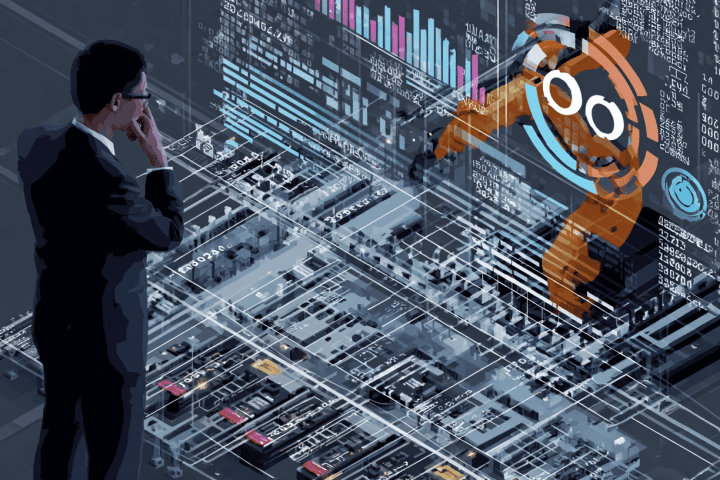In an increasingly interconnected world, global infrastructure security has emerged as one of the most pressing challenges facing nations, businesses, and societies. The convergence of sophisticated cyberattacks and complex supply chain vulnerabilities creates a threat landscape that demands immediate attention and comprehensive strategic responses.
Understanding Global Infrastructure Security
Global infrastructure security encompasses the protection of essential systems that modern society depends upon for basic functioning. These critical infrastructures include power grids, telecommunications networks, transportation systems, water treatment facilities, financial institutions, and healthcare systems. The interconnected nature of these systems means that a security breach in one area can cascade across multiple sectors, creating widespread disruption.
The digital transformation of infrastructure has introduced unprecedented efficiency and connectivity benefits, but it has also expanded the attack surface available to malicious actors. Traditional physical security measures, while still important, are no longer sufficient to protect infrastructure that increasingly relies on digital systems, cloud services, and network connectivity.
Modern infrastructure security requires a holistic approach that addresses both physical and cyber threats while considering the complex interdependencies between different systems and sectors. This comprehensive perspective acknowledges that infrastructure security is not merely a technical challenge but a national security imperative that affects economic stability, public safety, and social cohesion.
The Evolving Cyberattack Landscape
Cyberattacks against critical infrastructure have evolved from isolated incidents to sophisticated, coordinated campaigns that pose existential threats to national security. State-sponsored actors, criminal organizations, and terrorist groups increasingly view infrastructure systems as high-value targets that can achieve maximum disruption with relatively modest resources.
Advanced persistent threats represent one of the most concerning developments in the cyberattack ecosystem. These long-term, stealthy campaigns involve attackers establishing persistent access to infrastructure networks, often remaining undetected for months or years while gathering intelligence and positioning themselves for maximum impact. The sophistication of these attacks often involves custom malware, zero-day exploits, and social engineering techniques that bypass traditional security measures.
Ransomware attacks have emerged as a particularly devastating threat to infrastructure operators. These attacks encrypt critical systems and demand payment for restoration, creating immediate operational disruptions while generating revenue for criminal organizations. Recent high-profile incidents affecting pipeline operators, municipal governments, and healthcare systems demonstrate the potential for ransomware to cause widespread societal impact.
The rise of artificial intelligence and machine learning technologies presents both opportunities and risks for infrastructure security. While these technologies can enhance threat detection and response capabilities, they also provide attackers with new tools for conducting more sophisticated and targeted attacks. AI-powered attacks can adapt in real-time to defensive measures, potentially overwhelming traditional security systems.
Supply Chain Vulnerabilities and Risks
Global supply chains have become intricate networks spanning multiple countries, vendors, and technological platforms. This complexity creates numerous vulnerability points that malicious actors can exploit to compromise infrastructure security. Supply chain attacks represent a particularly insidious threat because they can introduce compromised components or software into trusted systems before deployment.
Hardware supply chain compromises involve the insertion of malicious components during the manufacturing process. These components can provide backdoor access, enable data exfiltration, or create system instabilities that can be triggered remotely. The global nature of electronics manufacturing makes it challenging for organizations to maintain complete visibility into their hardware supply chains.
Software supply chain attacks target the development and distribution processes for software applications and updates. By compromising software vendors or distribution channels, attackers can inject malicious code into legitimate software that is then deployed across thousands of organizations. These attacks are particularly effective because they leverage trust relationships between organizations and their software providers.
Third-party vendor management has become a critical component of supply chain security. Many infrastructure operators rely on external vendors for maintenance, support, and specialized services. Each vendor relationship creates potential attack vectors that must be carefully managed through comprehensive vetting, monitoring, and contractual security requirements.
The just-in-time manufacturing and lean inventory practices that characterize modern supply chains create additional vulnerabilities. While these approaches improve efficiency and reduce costs, they also create single points of failure that can cause widespread disruptions when compromised. The COVID-19 pandemic highlighted how quickly supply chain disruptions can cascade across multiple sectors and geographic regions.
Sector-Specific Vulnerabilities
Different infrastructure sectors face unique security challenges that require tailored protection strategies. The energy sector, including power generation and distribution systems, faces threats from cyberattacks that could cause widespread blackouts or damage expensive equipment. Smart grid technologies, while improving efficiency and reliability, also create new attack surfaces that must be carefully secured.
Transportation infrastructure, including airports, seaports, railways, and traffic management systems, relies heavily on interconnected digital systems that coordinate complex operations. Cyberattacks against transportation systems can cause immediate safety risks while disrupting economic activity and emergency response capabilities.
Water and wastewater treatment facilities operate critical systems that directly impact public health and safety. These facilities often use industrial control systems that were originally designed for reliability rather than security, creating vulnerabilities that attackers can exploit to disrupt water supplies or compromise treatment processes.
Financial infrastructure underpins economic activity and includes banking systems, payment networks, and trading platforms. The high value and liquidity of financial assets make these systems attractive targets for both criminal organizations and state-sponsored actors seeking economic disruption or theft.
Healthcare infrastructure has become increasingly digitized, with electronic health records, medical devices, and telemedicine platforms creating new attack surfaces. Cyberattacks against healthcare systems can directly threaten patient safety while disrupting essential medical services.
Emerging Threat Vectors
The Internet of Things (IoT) expansion has introduced millions of connected devices into infrastructure systems, many with minimal security protections. These devices can serve as entry points for attackers or be weaponized into botnets that can overwhelm target systems with distributed denial-of-service attacks.
5G networks promise enhanced connectivity and performance but also introduce new security considerations. The increased speed and capacity of 5G networks can amplify the impact of successful attacks, while the expanded use of software-defined networking creates new vulnerability points that must be carefully managed.
Cloud computing adoption in infrastructure sectors offers scalability and efficiency benefits but also creates new dependencies and potential single points of failure. Organizations must carefully evaluate cloud security practices and ensure appropriate controls are in place to protect sensitive infrastructure data and systems.
Defensive Strategies and Best Practices
Effective infrastructure security requires a multi-layered defense strategy that combines technological solutions with organizational processes and human expertise. Zero-trust architecture principles assume that no system or user should be trusted by default and require continuous verification of access requests and activities.
Continuous monitoring and threat intelligence capabilities enable organizations to detect and respond to attacks in real-time. These systems must be capable of analyzing vast amounts of data to identify subtle indicators of compromise while minimizing false positives that can overwhelm security teams.
Incident response planning and regular exercises ensure that organizations can quickly contain and recover from security incidents. These plans must address both technical response procedures and communication strategies for coordinating with government agencies, industry partners, and the public.
Supply chain security programs should include comprehensive vendor assessments, contractual security requirements, and ongoing monitoring of third-party relationships. Organizations must maintain visibility into their supply chains and implement controls that can detect and prevent the introduction of compromised components or software.
International Cooperation and Standards
Global infrastructure security challenges require coordinated international responses that transcend national boundaries. Information sharing partnerships enable organizations and governments to share threat intelligence and best practices while coordinating responses to major incidents.
International standards and frameworks provide common languages and approaches for addressing infrastructure security challenges. These standards help organizations implement consistent security practices while facilitating cooperation and communication across different sectors and jurisdictions.
Diplomatic efforts to establish norms of responsible state behavior in cyberspace are essential for reducing the risk of conflicts that could target civilian infrastructure. These efforts must balance national security interests with the need for international cooperation and stability.
Future Considerations and Recommendations
The future of global infrastructure security will require continued adaptation to evolving threats and technologies. Organizations must invest in security capabilities that can scale with their digital transformation initiatives while maintaining focus on fundamental security principles.
Workforce development and training programs are essential for building the human expertise needed to address infrastructure security challenges. These programs must address both technical skills and the strategic thinking required to anticipate and counter sophisticated threat actors.
Public-private partnerships can leverage the unique capabilities and resources of different sectors to enhance overall infrastructure security. These partnerships must balance information sharing and cooperation with competitive and national security considerations.
Conclusion
Global infrastructure security represents one of the defining challenges of the digital age, requiring sustained commitment and coordinated action from governments, businesses, and civil society. The interconnected nature of modern infrastructure means that security vulnerabilities in one area can quickly cascade across multiple sectors and geographic regions.
Success in addressing these challenges requires a comprehensive approach that combines technological innovation with organizational excellence and international cooperation. Organizations that proactively address infrastructure security risks while maintaining focus on operational excellence will be best positioned to thrive in an increasingly complex and dangerous threat environment.
The stakes could not be higher, as the security and resilience of critical infrastructure directly impacts economic prosperity, national security, and public safety. By working together and maintaining vigilance against evolving threats, we can build more secure and resilient infrastructure systems that support continued technological advancement and social progress.












